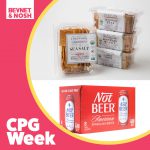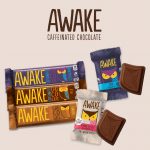NOSH Voices: Building Consumer Habits, Why Lifestyle Marketing Doesn’t Mean YOUR Lifestyle

Entrepreneurs are a lot like monks. Their work and their lives have no separation. It’s a 24/7 reality. A 24/7 passion.
So, when entrepreneurs say their brand is a lifestyle brand, they’re not joking around. Their brand, their business, really is their lifestyle. It’s why these folks are so charismatic at trade shows. Most folks just never commit that much of themselves to work.
A problem arises, though, when entrepreneurs confuse their own lifestyles with valid proof that they have a lifestyle brand. The passion that drove them to make an extraordinary commitment then quickly transforms into a drive to spread the trademark across the store and across the land. Belief that one has a lifestyle brand is one of the drivers behind the multi-category, platform brands we continue to see launching throughout the food industry. But, it can also be found in highly focused product lines as well. It is one of the reasons entrepreneurs seek out prematurely large sums of capital to promote their businesses. Whenever the entrepreneur feels that their product can truly transform lives, there lies the seed of the desire to engage in ‘lifestyle marketing.’ But, the entrepreneur’s product may or may not be amenable to lifestyle marketing at all. Think oatmeal.
For products that connect to fairly extreme life choices (e.g. eliminating gluten or dairy), it’s easy to see the allure of marketing to the ‘gluten-free lifestyle’ or, more recently, to the ‘keto lifestyle.’ But there are differences between food habits, dietary commitments, and lifestyles.,Food entrepreneurs should understand the difference between all three as they plan their growth.
What is “habit”?
Many consumers grab an evening snack while watching streaming content at night these days. Most have some go-to categories they consume almost constantly for long stretches of time. Marketers can market to these behavioral moments (or eating occasions) and create personal habits with their brand as the go-to-option. But a habit is clearly not a lifestyle, just a low-level component of one.
But habit is powerful: The more you focus your business strategy, and your supporting marketing efforts, to form powerful habits, the more you will become embedded in a consumer’s daily lifestyle in the most powerful and tangible of ways. This is not accomplished by declaring yourself a lifestyle brand, however. Habitual consumption drives high, frequent volumes. Adding consumers who habitually consume drives velocity growth in a sustainable way. This should form the core of any emerging brand’s strategy.
What is a “dietary commitment”?
When a consumer decides to eliminate something from their diet, the degree of that elimination may honestly vary. Those who truly purge the pantry of gluten, so to speak, are often described as living the ‘gluten free lifestyle’. In this case, ‘lifestyle’ has become a synonym for extreme commitment to a non-mainstream dietary alteration. But the reason it is interesting to food entrepreneurs is that it leads to new food habits (and brand choices), i.e. at some point, this dietary commitment is something the consumer stops thinking about once they’ve committed deeply for long enough. And the commitment does alter many eating occasions every week. But a dietary commitment also is NOT a lifestyle. Its scope of influence on the consumer’s overall life is way too narrow, despite how much they may talk about it. Personal health narratives often work much better for these kinds of products.
What is lifestyle?
“Lifestyle” is a modern word for the old social science concept of subculture or, in pre-modern societies, the tribe. In complex, modern societies like ourselves, it’s impossible to make valid generalizations across the population about every major domain of daily activity (eating, clothing, technology preferences, careers, education, income, etc.). Ultimately, an individual’s patterns of food consumption can be linked to multiple subcultures in which we participate. Lifestyles, as subpopulations, can be therefore defined at varying levels of scale. The largest in scope is social class (best defined by combinations of income, educational attainment and occupation). These are big, crude chunks of the population. And they have enormously tight correlation to the specific zip codes consumers live in and where they shop for food and beverage. The smallest lifestyle communities we participate in would be extreme hobbies. The most iconic of these today is probably endurance athletics.
The larger the scope of the lifestyle community, though, the less helpful it is in guiding product marketing strategy (and tactical execution) and the more helpful it is in guiding go-to-market strategy. Why? Well, because there isn’t enough shared deeply between all members of a broad social class to really drive authentic, emotional engagement between a brand and the consumer. It’s too vague a community.
So, it’s now probably obvious to the reader that we can place consumers inside multiple lifestyle communities as business strategists. But, however you define them, a lifestyle is something that affects almost every aspect of the consumer’s daily existence. This is the power of the concept.
Being a triathlete is a great example of a highly marketable lifestyle, because it’s really hard to train that hard every week and not have it impact almost all aspects of your daily life. Ever met the spouse of a triathlete? Ever looked in their garage? In their bedroom closet? Supplements, nutrition bars and recovery products often target these folks with lifestyle marketing. Some call it tribal marketing. What they’re focusing on is extreme commitment to a social community that transforms the consumer’s everyday life.
Lifestyle communities that feature extreme commitments and risks are very, very powerful groups who can help launch food brands today. But, wait. They are also constantly bombarded with companies trying to do this. And sometimes, the fit is, well, pretty weak. Endurance athletes micro-manage their nutritional intake. This is well known. But it doesn’t mean any exotic nutritional concept is a great fit. Raw kale chips may be highly nutritious, but they don’t offer the kind of tailored nutritional snack and easily digestible form endurance athletes want in their training food.
Occupation is perhaps the most important driver of a consumer’s daily lifestyle and is perhaps one of the least discussed lifestyle worlds we all occupy. Some of smartest grassroots marketing campaigns have focused on recruiting members of specific occupational lifestyles to become brand evangelists and word of mouth marketing mavens, often totally unpaid (other than in cases of free product!). KIND focused heavily on yoga teachers. The brand was able to lever off of the impressive lifestyle commitment these folks exude. When they recommend healthy foods (or brands), people tend to listen.
The key is to utilize brand-relevant lifestyle groups as beachheads of social influence, rather than as the entirety of the addressable market your product serves. Almost always, it should be a larger group. But, the lifestyle influencer will be more charismatic than the average early consumer. They are a critical grassroots marketing force.
One way to layer multiple lifestyle audiences into a go-to-market strategy is to select the social class most aligned to your offering and sell at stores near where they live (or where they shop in disproportionate numbers). Then, activate lifestyle influencers in an occupational or recreational lifestyle in those zip codes to get the word out. Some brands have done this accidentally quite well. It is generally of benefit most to offerings that are NOT immediately obvious BFY innovations (which tend to require very little marketing at all).
The power of lifestyle marketing lies not just in the selection of the lifestyle, though. It is really about communicating in language with your consumer audience that you get how they think and feel. This is very, very hard to pull off as an outsider, even when you have years to study the audience like anthropologists do. It’s much better to recruit such a person and bring them inside your company to influence everyone. It’s even better if the founder is already that person!

At Project NOSH and BevNET, we pride ourselves on having a robust network of food and beverage entrepreneurs, industry insiders and advisers. NOSH Voices is a series of columns penned by respected experts to provide a spectrum of views from within the food community. Interested in contributing to NOSH Voices? Contact the Editors.












